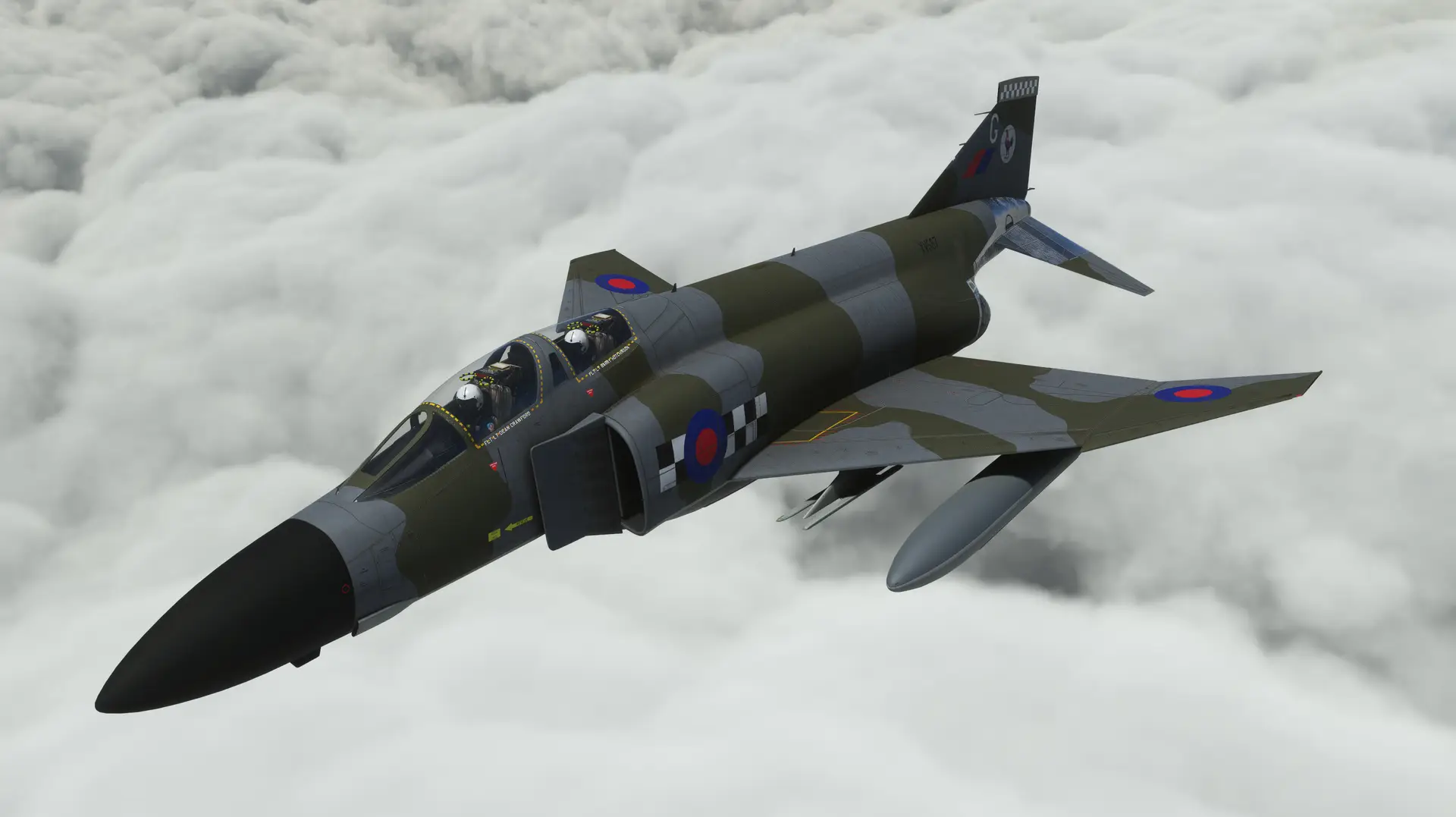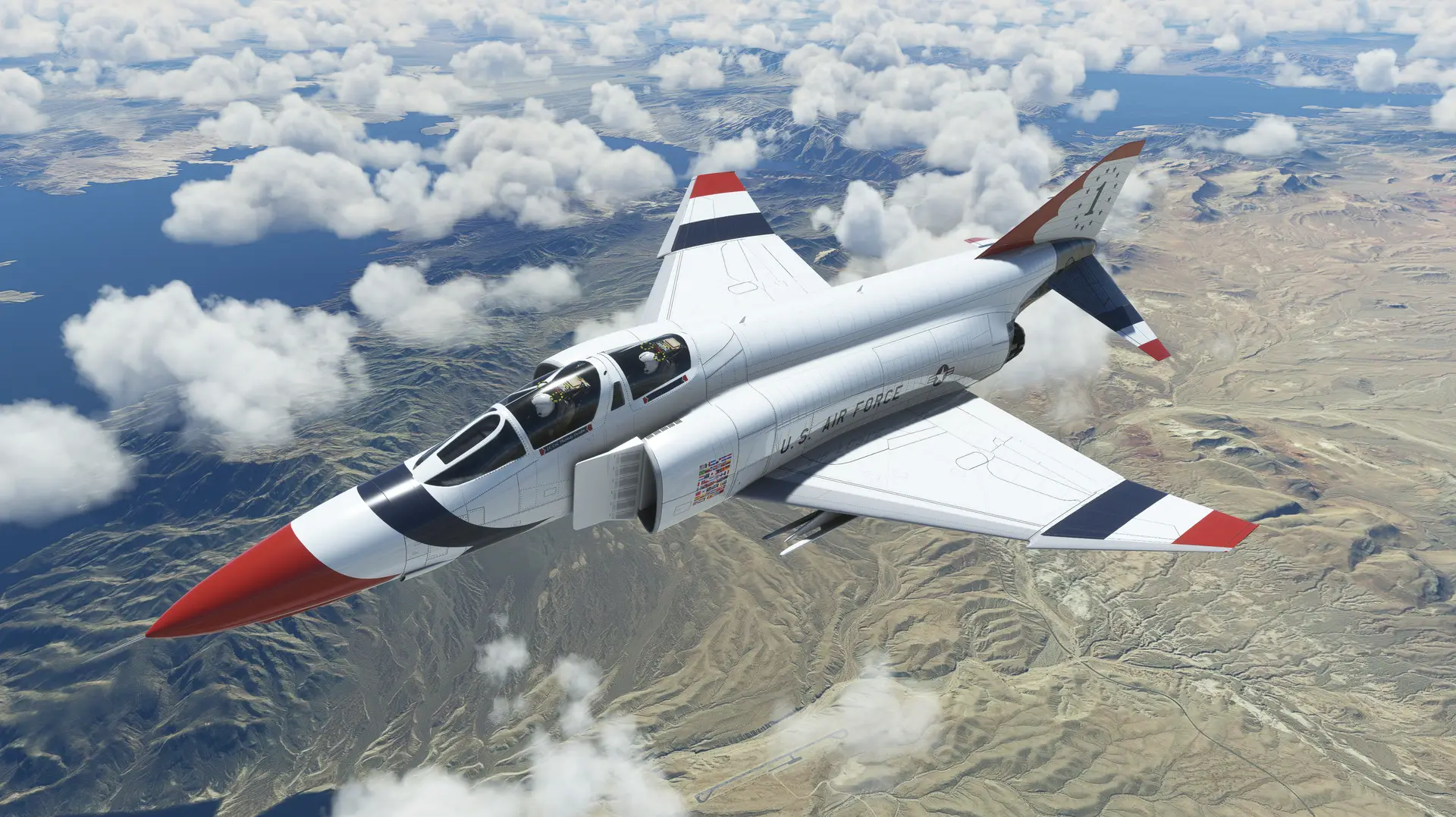- USD 34.99
- -48%
- USD 34.99
- USD 17.99
- Sale Ends: January 7 2026 6:00 PM +00:00
- View more offers at FS Addon Compare
- Added: July 20, 2023
- Updated: November 21, 2025
The McDonnell Douglas F-4 Phantom II is an American tandem two-seat, twin-engine, all-weather, long-range supersonic jet interceptor and fighter-bomber originally developed by McDonnell Aircraft for the United States Navy. Proving highly adaptable, it entered service with the Navy in 1961 before it was adopted by the United States Marine Corps and the United States Air Force, and by the mid-1960s it had become a major part of their air arms. Phantom production ran from 1958 to 1981 with a total of 5,195 aircraft built, making it the most produced American supersonic military aircraft in history, and cementing its position as a signature combat aircraft of the Cold War.
Accurately modelled F-4E, F-4J and British FGR2 Phantoms, each with unique animations for each variant Custom effects for the 'smoky' J-79 and Rolls-Royce Spey engines Full use of all MSFS effects such as G vapour, icing, contrails and heat exhaust blur Arrestor hook and launch system compatible with MSFS moving aircraft carriers Numerous liveries - see the Detailed Description below
Cockpit
3D virtual cockpit based on the F-4J Phantom Fully animated instruments and controls Custom-coded INS with LAT/LONG input requirements for complex navigation Operational radar with Air-to-Air and Air-to-Ground modes
Aircraft systems
Radar Inertial Navigation System Fuel system transfer and cross-feed Hydraulic system Thermal anti-icing system, including airframe and engine anti-icing Autopilot, including pitch and bank hold TACAN and VOR navigation, including TACAN panel
Lighting
Dimmable dynamic flood lighting for a highly immersive and customisable night environment
Sounds
MSFS-native (Wwise) sound package taking full advantage of the new MSFS capabilities Rolls-Royce Spey and J-79 engine recordings from the real aircraft
FDE and effects
Realistic and accurate flight dynamics based on real-world performance and handling data via actual aircraft manuals
MSFS checklists
LIVERIES
RAF Phantom FGR2: 43 Squadron (Camo) Black Mike 56 Sqn 92 Sqn 74 Sqn
RN Fleet Air Arm F4K
892 Naval Air Squadron '007', Fleet Air Arm
US Navy F4-J Phantoms:
Blue Angels VF-96 CAG 'Showtime 100' VF-111 Sundowners VF-51 Screamin' Eagles VF-84 Jolly Rogers US Marines F4-J:
VMFA-333 VMFA-232 JASDF F4-E
302nd TFS, JASDF
USAF F4-E
Thunderbirds:
4th TFW (Grey scheme) 4th TFW, 337th TFS ('MiG Killer') 347th TFW, 70th TFS 'White Knights' 20th FS, 49th FW, Holloman AFB, New Mexico 469th TFS, 388th TFW 'Betty Lou'
Foreign Phantoms:
RAAF Phantom F-4E Greek Air Force F-4E Turkish F-4E Israeli F-4E Iranian F-4E



